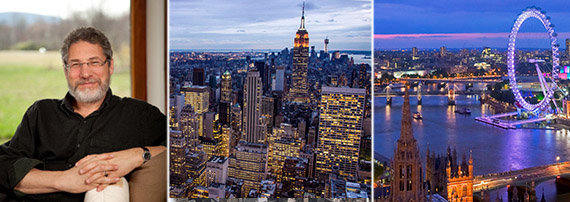Trending
Affordable housing snapshot: NYC vs. the world
ULI panelists discuss how the Big Apple's policies compare to London, HK, SF

When it comes to affordable housing, New York City shares many challenges with cities like London, Hong Kong and San Francisco.
That was the core message of a roundtable discussion held Tuesday at the Urban Land Institute’s fall meeting at the Javits Center. Over lunch, real estate insiders including the city’s Housing Preservation and Development commissioner Vicki Been and affordable housing developer Jonathan Rose, swapped strategies for increasing their city’s affordable housing stock. Here’s how the cities stacked up.
New York
With affordable housing a central focus of his campaign, and now his administration, Mayor Bill De Blasio has pledged to build or preserve 200,000 affordable housing units over 10 years. That’s roughly 8,000 a year in new construction. The administration also wants to “shore up and preserve” 165,000 units of public (city-owned) housing, said Been, who before taking the City Hall job was the director of NYU’s Furman Center.
There are 1 million New Yorkers that are considered “very low or extremely low income” – that is, having income up to $42,000 for a family of four – but just 400,000 housing units available to them, Been said. HPD is looking to shave 25 percent off the time it takes developers to clear the city’s regulatory hurdles to save them money, she added.
Subsidies remain the only solution to the city’s affordable housing drought, said Rose, whose firm is building the East Harlem Center for Living and Learning on 104th Street and Second Avenue, which will have 89 affordable housing units, as well as BAM North II in Downtown Brooklyn, which will have 42 affordable units.
San Francisco
The city by the bay’s Mayor Ed Lee has pledged 30,000 new housing units by 2020, or 6,000 new apartments each year for the next five years. Of them, 1,500 units a year would be affordable in a city where the average two-bedroom rents for $4,200 a month – a figure which less than 20 percent of the city’s residents can afford, according to Daniel Safier, president of San Francisco-based real estate investment firm Prado Group. There are about 25,000 units overall in the pipeline.
London
With the majority of its housing stock built in the early 1900s (or earlier), London’s housing supply is currently falling short of population growth: the city’s population is growing at a rate of 1.2 percent a year, while housing stock is increasing 0.8 percent.
Last year, Mayor Boris Johnson laid out a strategic goal to create 42,000 new housing units a year, including 17,000 subsidized units. Like New York, foreign and local investors are likely to play a big part: “Investors in the U.K. are desperate to invest in the rental sector,” said Andy Martin, senior partner at London-based brokerage Strutt & Parker.
Hong Kong
In Hong Kong, $2 million may get you a 600 square foot apartment.
Hong Kong’s housing supply target is 470,000 units in the next 10 years, with about 60 percent of them public housing. That amounts to about 20,000 public housing units a year and 8,000 private housing units a year. Currently, there are more than 200,000 names on Hong Kong’s waiting list for public housing, half of them recent graduates, said Dr. Sujata Govada, managing director of UDP International. A lesson for others based on what’s worked in Hong Kong? “Don’t shy away from density,” she said.




